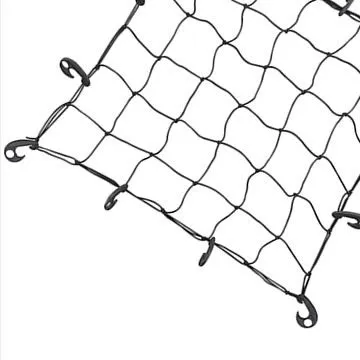Oct . 13, 2024 05:40 Back to list
Composition and Materials Used in Mineral Fiber Ceiling Tiles Explained
What Are Mineral Fiber Ceiling Tiles Made Of?
Mineral fiber ceiling tiles are a popular choice for commercial and residential buildings due to their sound absorption capabilities, thermal insulation properties, and aesthetic versatility. Understanding the materials that make up these tiles can provide insight into their benefits and applications.
Composition of Mineral Fiber Ceiling Tiles
As the name suggests, mineral fiber ceiling tiles are primarily made from mineral-based materials. The most common components include
1. Fiberglass Fiberglass is a crucial constituent of many mineral fiber tiles. This material is composed of fine glass fibers, which are created by melting silica sand and other materials at high temperatures. The resulting thin, flexible fibers can be combined with other materials to enhance the structural integrity and sound absorption qualities of ceiling tiles.
2. Mineral Wool Also known as rock wool or stone wool, mineral wool is produced from natural or recycled stones, primarily basalt and limestone. The stones are melted and then spun into fibers that are bonded together with a resin. Mineral wool tiles are known for their excellent fire resistance and thermal insulation properties, making them a safe option for buildings.
3. Cellulose Some mineral fiber ceiling tiles incorporate cellulose, which is derived from recycled paper products. This material helps to create a lighter tile and adds sustainable benefits to the product. Cellulose is often treated to enhance fire resistance and durability.
4. Perlite Perlite is a volcanic glass that expands when heated, creating lightweight and porous material. Its addition to mineral fiber tiles helps to improve their acoustic performance and thermal insulation.
5. Acoustic Additives Various additives are added to enhance the acoustic properties of mineral fiber ceiling tiles. These can include specific minerals or materials that are effective at sound absorption, thereby improving the overall performance of the tiles in minimizing noise levels in a space.
Manufacturing Process
The manufacturing process of mineral fiber ceiling tiles typically involves several steps
1. Raw Material Preparation The raw materials—fiberglass, mineral wool, cellulose, perlite, and additives—are precisely measured and mixed.
2. Formation The mixture is then formed into boards or tiles. This process can include methods such as wet laying, where a slurry of fibers is laid out on a screen and then dried, or dry forming, where fibers are compressed into shape without the use of water.
what are mineral fiber ceiling tiles made of

3. Curing After formation, the tiles are cured in a controlled environment to allow the binders and additives to bond effectively. This step is crucial in ensuring the tiles have the necessary structural integrity and performance characteristics.
4. Cutting and Finishing Once cured, the tiles are cut to size and sometimes further treated with a finish or coating. This can include paint for aesthetic appeal and additional surface treatments to enhance durability and cleanability.
5. Quality Control Finally, the tiles undergo rigorous quality control testing to ensure they meet industry standards for acoustics, fire resistance, and physical durability.
Advantages of Mineral Fiber Ceiling Tiles
Mineral fiber ceiling tiles offer several advantages
- Sound Absorption Due to their porous structure, these tiles can effectively absorb sound, making them ideal for offices, schools, and other environments where noise reduction is important.
- Fire Resistance Mineral fiber materials are naturally fire-resistant, providing an added layer of safety in the event of a fire.
- Thermal Insulation These tiles help maintain energy efficiency by providing thermal insulation, which can reduce heating and cooling costs.
- Sustainability Many mineral fiber tiles are made from recycled materials, and their longevity means fewer replacements, lowering environmental impact over time.
- Versatility Offering a variety of styles, textures, and finishes, mineral fiber ceiling tiles can complement diverse architectural designs.
Conclusion
Mineral fiber ceiling tiles are a robust solution for modern building needs, combining functionality, safety, and aesthetic appeal. With a mixture of fiberglass, mineral wool, cellulose, and other materials, these tiles prove to be an effective choice for enhancing the performance of interior spaces. As more emphasis is placed on sustainability and acoustics in construction, the popularity and innovation of mineral fiber ceiling tiles are likely to continue growing.
-
Durable Ceiling T Grid Systems | Easy InstallationNewsAug.29,2025
-
PVC Gypsum Ceiling: Durable, Laminated Tiles for Modern SpacesNewsAug.28,2025
-
Pvc Gypsum Ceiling Is DurableNewsAug.21,2025
-
Mineral Fiber Board Is DurableNewsAug.21,2025
-
Ceiling Tile Clip Reusable DesignNewsAug.21,2025
-
Ceiling T Grid Modular DesignNewsAug.21,2025







